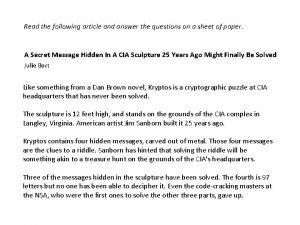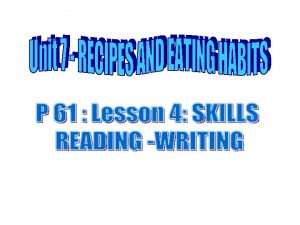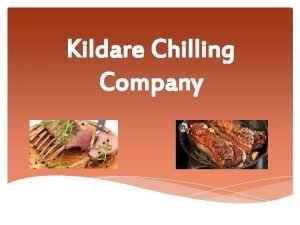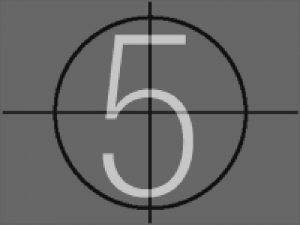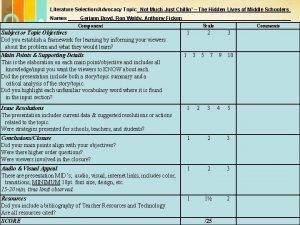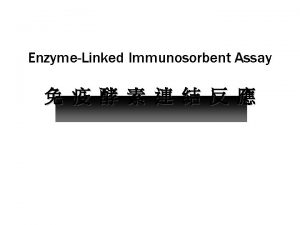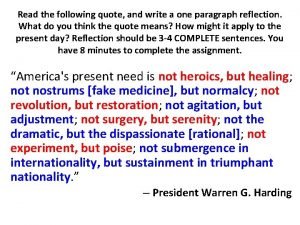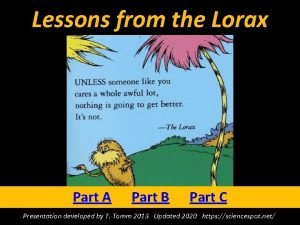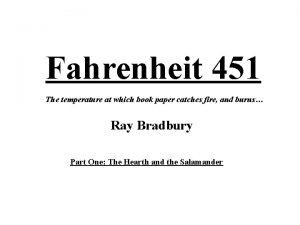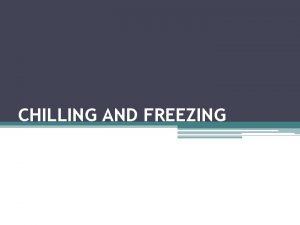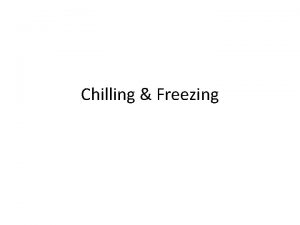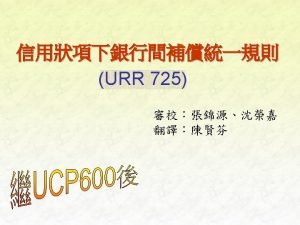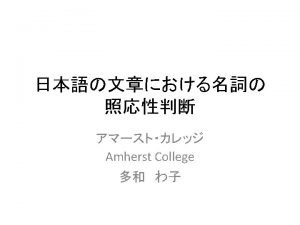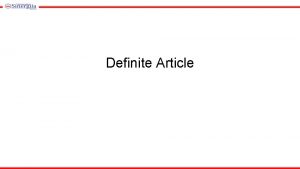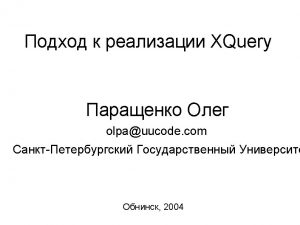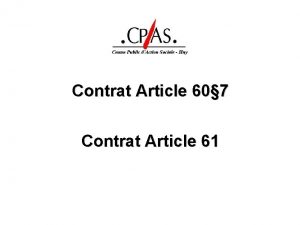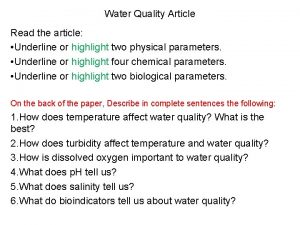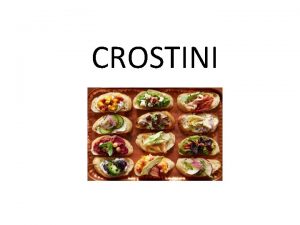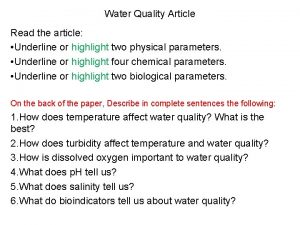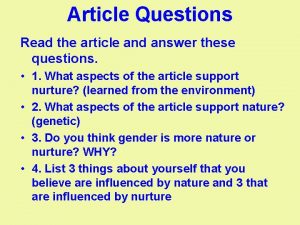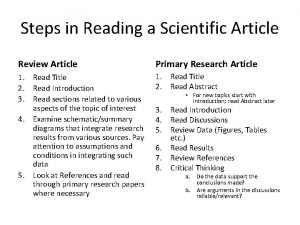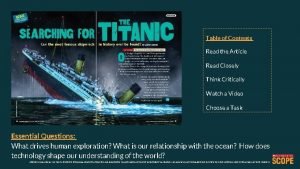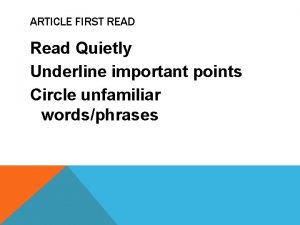Scientific American Chilling Changes Read article pages E























- Slides: 23

Scientific American: Chilling Changes Read article pages E 2 -5 1. What do you call passing the winter in a sleeplike state? 2. What happens if ice forms inside a cell? 3. What’s one animal that avoids freezing? 4. What’s one animal that tolerates freezing? 5. What types of environments present challenges for living things?

Warm Up February 10 th, 2016 1) Where does the energy you use come from? Explain… 2) Compare and contrast a cell to an atom. 3) Cell respiration is the process in which food is converted into energy. Which two substances are needed for cellular respiration? ***BONUS*** Where does cell respiration occur in the body?

Warm Up February 10 6 H 2 O + 6 CO 2 C 6 H 12 O 6 + 6 O 2 1. 2. 3. 4. Identify the chemical reaction above. What are the reactants and products above? What is cellular respiration? Why do plants need to go through this chemical reaction (above) before performing cell respiration?

Review and Discuss 1. Pre Assessment Data – New Cooperative Groups 2. Unit 2 D Chemistry and Natural Resource Test – Most Missed Questions - Thursday

Introduction to Cells PRE Assessment……………. .

What do you remember about cells from 7 th grade?

Living Things have : • • common characteristics common needs. are different from non living things The microscope led to the discovery of cells.

To Be Classified as Living it must: • Be organized • Grow and develop • Respond to its environment • Be able to reproduce All organisms need energy, materials, and living space. All energy for life on Earth comes from the sun. ALL living things are made from cells.

Cells • The microscope led to the discovery of cells. • Robert Hooke gave the cell its name in the 1660’s. – He compared the cell structure of a piece of cork to the structure of apartments or living spaces that monks live in. 30 x scope • Anton Van Leeuwenhoek also studied cells in the 1670’s. A drop of pond Water, 300 x scope

• Cells come from Cells! • 1850’s - cells divide, that’s how they multiply hahaha • So, one living cell divides into two living cells. The cell is the smallest unit that performs the basic activities of life. Multicellular organisms have specialized cells that work together. Unicellular organisms-single cell that does ALL the activities for life.

The Cell Theory • A theory is an explanation of what is observed, and must be supported by evidence. Pasteur used the cell theory as a foundation for his studies. He Found that: • Bacteria causes food spoilage, sour milk, many diseases. • Living things do not rise by spontaneous generation

The Cell Theory The importance of the cell to life is summarized in the cell theory. (13 E) • 1. All living things are made of cells • 2. Cells carry out the functions needed to support life. • 3. Cells come ONLY from other living cells.

WRITE • What do scientists mean when they say that life comes from life? Your answer should include the word CELLS.

Bill Nye: Cells 1. New Cooperative Groups 2. Post Video Quiz 3. Review and Discuss – Trade and grade

Brain Pop: Cells The smallest units of life!

Cell* The smallest unit of life.

Cell Organelles to Label • Label the following organelles. • After labeling, write a 2 sentence description of the organelles cell function under the diagram. • Be careful to label the correct type of cell with its correct organelles. • Organelles (6): cell wall, cell membrane, mitochondria, ribosomes, nucleus with DNA, and chloroplasts with chlorophyll.

• • • Cell Organelle Functions cell wall- provides plants cells with structure cell membrane- decides what goes in and out Mitochondria- powerhouse of the cell (cell resp. ) Ribosomes- makes proteins to repair cell parts nucleus with DNA- brain of the cell. Holds DNA chloroplasts with chlorophyll- responsible for photosynthesis

Macromolecule* Large molecules made up of smaller molecules linked together. Types: carbohydrates, lipids (fats), proteins, and nucleic acids

• A macromolecule is a very large molecule, such as protein, commonly created by polymerization of smaller subunits (monomers). They are typically composed of thousands or more atoms.

What do you know already? What is a carbohydrate and where have you heard of them? What is fat? What is protein? What is a nucleic acid? These are all macromolecules: Large molecules

Brain Pop: Cells The smallest units of life!

 Printed pages vs web pages
Printed pages vs web pages Changes in latitudes, changes in attitudes meaning
Changes in latitudes, changes in attitudes meaning Physical changes
Physical changes Read the article answer the questions
Read the article answer the questions Read the article answer the questions
Read the article answer the questions Answer the questions in pairs
Answer the questions in pairs What are the market forms of poultry
What are the market forms of poultry Who owns kildare chilling
Who owns kildare chilling Infinitively
Infinitively Nothing much just chilling
Nothing much just chilling Scientific inquiry vs scientific method
Scientific inquiry vs scientific method How is a scientific law different from a scientific theory?
How is a scientific law different from a scientific theory? Jordan-wigner transformation
Jordan-wigner transformation Scientific american
Scientific american Scientific american
Scientific american Read the following quote
Read the following quote Eyeline yearbook example
Eyeline yearbook example What is the collection of web page
What is the collection of web page What lesson(s) do you think the once-ler learned?
What lesson(s) do you think the once-ler learned? Beatriz pagés hijos
Beatriz pagés hijos What is jsp file
What is jsp file Fahrenheit 451 first page
Fahrenheit 451 first page Fahrenheit 451 pages 67-76 summary
Fahrenheit 451 pages 67-76 summary What did beatty discover when he hit montag
What did beatty discover when he hit montag



